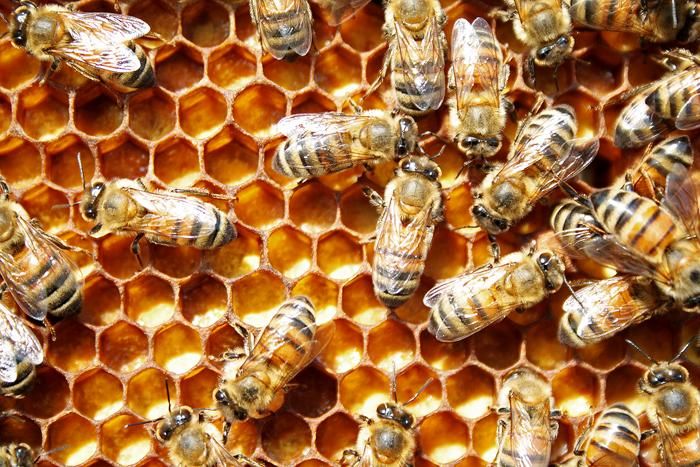Beyond royal jelly: Study identifies plant chemical that determines a honey bee's caste
A closer look at how honey bee colonies determine which larvae will serve as workers and which will become queens reveals that a plant chemical, p-coumaric acid, plays a key role in the bees' developmental fate.

Terry Harrison, U. of I. beekeeper
The study shows that broad developmental changes occur when honey bee larvae are switched from eating royal jelly to a diet of jelly that includes honey and beebread.
Beebread and honey contain p-coumaric acid, but royal jelly does not. Queens feed exclusively on royal jelly. Worker bees known as nurses feed the larvae according to the needs of the hive.
Experiments revealed that ingesting p-coumaric acid pushes the honey bee larvae down a different developmental pathway from those fed only royal jelly. Some genes, about a third of the honey bee genome, are upregulated and another third are downregulated, changing the landscape of proteins available to help fight disease or develop the bees' reproductive parts.
"Consuming the phytochemical p-coumaric acid, which is ubiquitous in beebread and honey, alters the expression of a whole suite of genes involved in caste determination," said University of Illinois entomology professor and department head May Berenbaum, who conducted the study with research scientist Wenfu Mao and cell and developmental biology professor Mary Schuler. "For years, people have wondered what components in royal jelly lead to queen development, but what might be more important is what isn't in royal jelly - plant chemicals that can interfere with development."
Original publication
Other news from the department science

Get the life science industry in your inbox
From now on, don't miss a thing: Our newsletter for biotechnology, pharma and life sciences brings you up to date every Tuesday and Thursday. The latest industry news, product highlights and innovations - compact and easy to understand in your inbox. Researched by us so you don't have to.























































